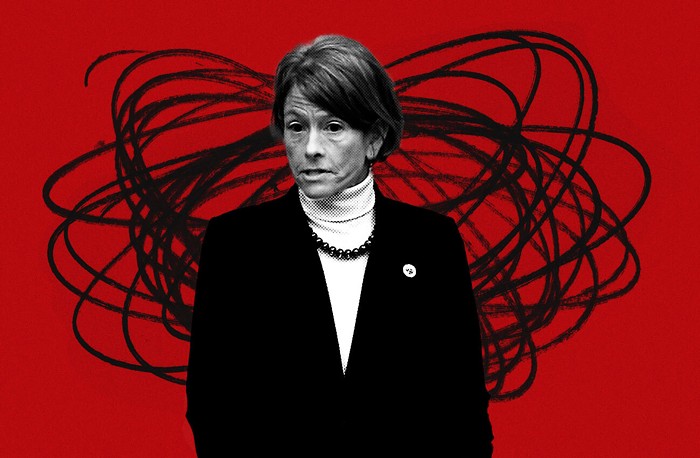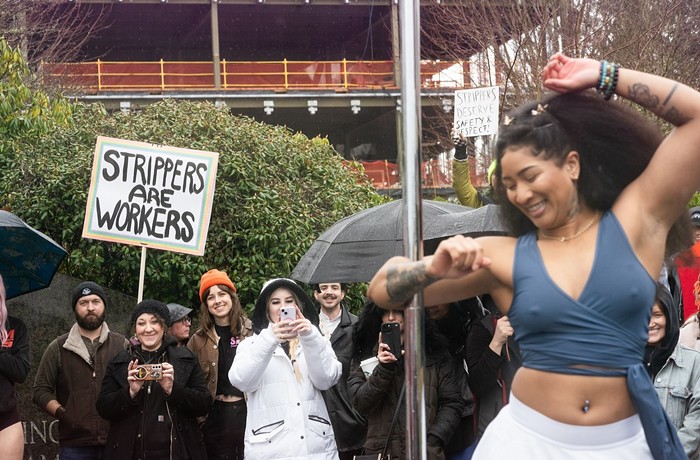It used to be a political given, something close to a mathematical certainty. Democrat Dow Constantine would beat Republican Susan Hutchison in the race for King County ex-ecutive because, in this liberal county, the numbers were firmly on Constantine's side.
Just look at the returns from the 2008 presidential election: Barack Obama, whom Constantine supported, won 70 percent of the vote here. Mike Huckabee, the strident conservative whom Hutchison backed with a $500 donation, was too hard-line to even make it through the Republican primaries. Or look at the returns from the 2008 governor's race: Democrat Christine Gregoire, whom Constantine supported, got 64 percent of the King County vote. Republican Dino Rossi, whom Hutchison supported with over $1,000 in contributions, got just 36 percent.
More to the point, look at the returns from this year's primary.
With no other serious Republicans in the race for King County executive, Hutchison had the county's conservative voters all to herself. She got 33 percent of the countywide primary vote—no doubt due in large part to name recognition from her years sitting behind a TV news desk, since she was otherwise a political unknown.
The Democratic primary field was much more crowded. State legislator Ross Hunter got 11 percent of the vote, state legislator Fred Jarrett got 12 percent of the vote, and King County Council member Larry Phillips got 12 percent of the vote. Constantine, also a King County Council member, came in first among the Democrats with 27 percent. It was fewer primary votes than Hutchison received, sure, but if you added all the primary votes for Democrats together, it was possible to see the old King County that liberals know so well. About 62 percent of the total vote went Democratic.
But something odd has happened on the way to this year's general election. Beginning in early September, according to three tracking polls conducted by SurveyUSA, Constantine hit a ceiling of 44 percent of the general-election vote (with the most recent poll, released on October 13, showing him dropping to 42 percent). Hutchison, meanwhile, has pulled a consistent 47 percent in every poll.
She's in the lead? In King County? How does that math work?
"First of all," said Constantine spokesman Sandeep Kaushik, "we're now in the general election. We've got nearly twice as many voters. It's not like we just re-vote with the primary election voters. If that were the case, it would be very different."
But why isn't Constantine doing better with the general election pool? They're mostly Democrats, after all.
"We just initiated our voter-contact efforts late last week," Kaushik said on October 19. "We saw the exact same pattern during the primary, where, in the last two weeks of the primary race, Constantine more than doubled his share of the vote. We went from like 12 percent to 27 percent." True, if Constantine more than doubles his support in the next two weeks—or merely increases it by a quarter—he wins. But can he? His SurveyUSA polling trend is downward, not upward.
Jordan McCarren, Hutchison's spokesman, explained the situation this way: "As the Seattle Times noted in their endorsement of Susan, 'This election is about change.'... Our county's many problems will not be solved by the same career politicians who created them."
Part of Constantine's problem, of course, is that county executive is now officially a nonpartisan position, making this a "nonpartisan" race. (Hutchison, no surprise, helped pay for the 2008 ballot measure that made it nonpartisan.) But Constantine has been trying for months to make sure the county's huge Democratic base knows that Hutchison is anti-choice, bad on the environment, a donor to conservatives such as Huckabee and George W. Bush, and alarmingly inexperienced.
So far, it's not working.
"This is one of the jobs we have between now and the election—to make sure voters understand where these two candidates stand on these issues and which one has the qualifications," Kaushik said.
The candidates' four televised debates would be a good venue for doing this. But in the first debate, Constantine struggled to puncture Hutchison's powerfully telegenic aura. He seemed stiff, nervous, and small in his suit, while Hutchison, commanding in a yellow jacket that only a former anchorwoman would wear, successfully turned Constantine's Democratic cred against him. "My opponent is a foreigner to the marketplace of ideas," she said. "He can't accept anything that isn't in his narrow area."
By the second debate, Constantine had found the right tone and message. He put some bite into his voice and aggressively countered Hutchison's "nonpartisan" claims, repeating over and over that she's anti-choice, bad on the environment, a backer of the likes of Huckabee and Bush, and inexperienced. He also went after her tenure running the Seattle Symphony, saying it wasn't as smooth as she contends and undercutting her central claim to past executive leadership experience.
But by then, Constantine had more than just debate presentation to worry about. He was facing an attack ad, put out by an independent coalition of conservatives with more than $150,000 to spend, showing him as a cartoon marionette drowning in his own mistakes. A liberal-leaning coalition countered within days with an ad attacking Hutchison as a Sarah Palin clone, but they have only $100,000 behind their effort.
The focus of these ads? The roughly 10 percent of registered voters still undecided about who should be the next county executive, according to the SurveyUSA polling. Most of them should be low-information Democratic voters who presumably can be pulled to Constantine's side, provided they receive the right information.
"We expect, over the next two weeks, to see voters move in our direction once they learn about Susan Hutchison's repeated efforts to hide where she really stands on core issues," Kaushik said. "I'm feeling pretty good." ![]()




















